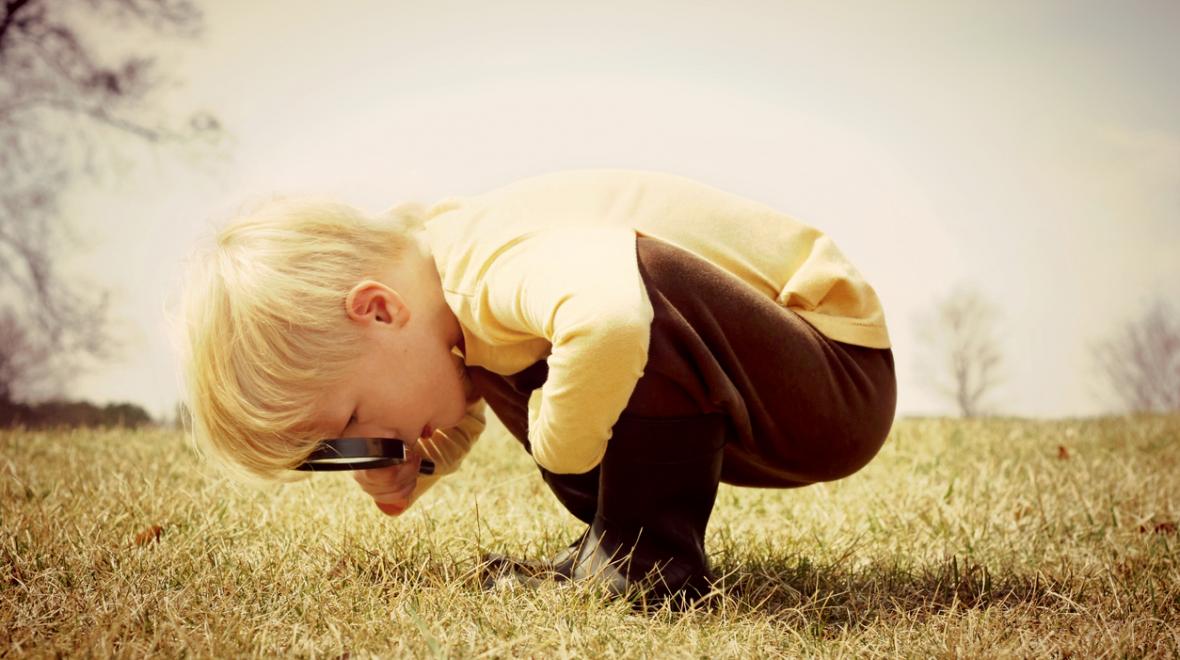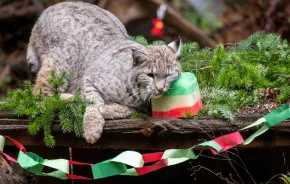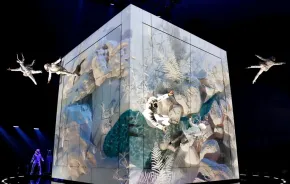
This article is sponsored by Bright Horizons Child Care & Early Education.
Many of my best memories from childhood happened on long afternoons outside, roaming the neighborhood with my twin sister and a small posse of friends who lived nearby. Sometimes we’d take to the streets on our bikes; others, we’d pull a wagon down the block, toting snack supplies and leaving room for a mass of natural and found treasures picked up on the way. Our parents didn’t really care what we were doing, so long as we were out of their hair and home by dark (and, if it was winter, that we came home with both gloves).
The idiosyncrasies of that place are so vivid in my mind that it’s like they’re frozen in time: the secret path with the rope swing on a hill, the plush green of that one spot by the tunnel, the smell of juniper and pavement wet after rain, cicadas chirping in the trees in summer, my mother’s voice calling us home.
What I couldn’t put words to then, and what made that time exploring my backyard and beyond so meaningful, was the cultivation of my sense of place and a deep connection to my environment.
When we allow our kids to play outside — whether in their own backyard, the neighborhood or a park — we teach them to appreciate where they are and offer them the feeling of belonging in the world. For kids and adults alike, spending time outside improves physical and mental health, increases attention span and focus, helps develop problem-solving, social, and sensory skills, and fosters independence, creativity and exploration.
In an age dominated by way too much screen-time and with the dire threat of climate change, getting outside to raise happy, healthy, conscientious and curious kids is more important than ever. These nine simple but engaging outdoor activities encourage kids to tune in to the world around them, become considerate stewards of their environment and have fun:
Make your own field guide
All you need for this activity is a blank notebook and a box of colored pencils. Find a spot to sit in the greenspace you’re exploring and take an inventory — what plants, animals, birds and insects do you see? Divide your notebook into these categories and dedicate a page to each species. Spend time observing and then drawing all the little details. If you know the name of the species, write it down along with any distinguishing characteristics. Take it a step further by downloading one or several plant and animal identification apps to find out scientific names and identify any species you aren’t sure of. You can use your field guide as a companion for any future nature walks!
Plan a nature scavenger hunt
Make a list of things you might see or find outside, such as: a feather, an acorn, three kinds of leaves, a flat rock, something purple, a bird’s nest, a mailbox, a flower, a butterfly or bee, an anthill, etc. Go on a walk, stopping often to observe what’s around you, and check things off the list as you find them.
Explore textures with chalk and playdough rubbings
This activity is a great way to explore different textures found in nature. You’ll need playdough, chalk and several sheets of paper, which you can either take with you on a walk or leave at home to come back to. Collect various items with different textures: a piece of tree bark, leaves, flowers and different types of rocks all work well. Place the found items under the paper and rub the chalk over it to see what texture it creates. To make a relief of the same items, roll out the playdough and press the items into it.
Honor the land
Find out what Native tribes are indigenous to the area where you live using this map, and then do some research about the people who lived there. You can look up things like what crops they cultivated and about their cultural and spiritual traditions, including animal symbology and traditional art. Find a way that feels personal to honor and give thanks to the land and to the people who lived there before you; you can sit in nature and write a poem or statement of gratitude, say a prayer or simply observe a moment of silence.
Get into birding
A good guidebook or app, such as this one from Audubon, and a pair of binoculars transform any time spent outdoors into an adventure in birding. In noticing colors and flight patterns and listening for calls, birding enlists the visual and auditory senses, and hones focus and attention skills. You’ll be surprised at the plethora of species in your neighborhood (even in the city!).
Plant a garden or visit a community garden or farm
There is nothing more exciting or rewarding than getting your hands dirty, growing your own food and eating it. Even the smallest raised garden bed or a large pot provides a fun opportunity for observation and a basic science lesson. Kids can make a logbook to track what they planted, record conditions and measure growth each day.
If growing a garden isn’t feasible for your family, visit a U-pick or working farm! Many even have volunteer programs where kids can spend a morning weeding or harvesting and learning what it takes to grow food.
Experience your senses
Find a comfortable, quiet spot to sit and invite your kid to use his senses to connect to the place. First, close your eyes and notice the way your body feels — how hard is the ground you’re sitting on? What is the breeze like on your skin? After tuning in for a minute, your olfactory senses kick in. What do you smell? Is it strong? Delicate? What do you hear? Are they human-made sounds or sounds made by nature? Open your eyes. What shapes and colors do you see? How does being outside make you feel on the inside?
Become a rock hound
Large pockets will do, but a bag or bucket is better for a real rock hunting quest. Pick up any rocks that catch your attention, and when you’ve got several types, sort and classify them by size, color and composition (sedimentary, metamorphic or igneous; here’s a geology refresher if you need it!). Notice the differences and similarities of each, and pick a few favorites to keep and display.
Craft with natural materials
Collect flowers, rocks, acorns, leaves, pinecones, shells, sticks, even mud, and turn them into art, being mindful to take only things you find in abundance. The creative possibilities are endless! This list has a plethora of clever ideas. Once you’ve exhausted all of these ideas and activities, we’ve got 11 more for you, so get exploring!












